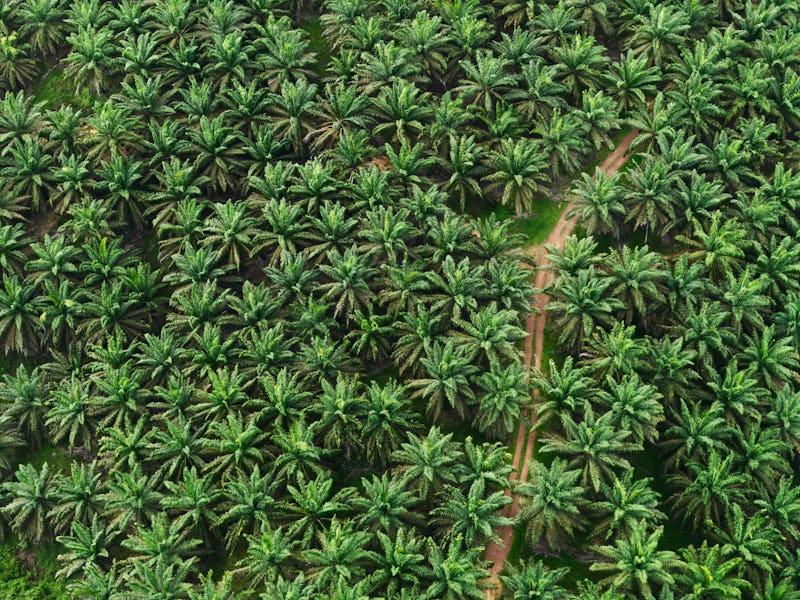Planting trees can be good for the environment — but only if you do it right
How good is planting trees, really?

Tree planting is one of the most popular fixes for the climate crisis. Trees’ ability to store carbon dioxide and prevent its release into the atmosphere — and they are natural! — but they may not be the cure-all we want them to be.
Today, the tree-planting trend manifests in initiatives like the Trillion Trees Campaign or the Bonn Challenge, which aims to reforest 350 million hectares of deforested land by 2030. But new research suggests that the way we plant trees can define whether reforestation efforts actually help an ecosystem — or damage it even further.
What’s new — In an analysis published Thursday in the journal Science, researchers show how restoring native forests — diverse, indigenous plant life — can conserve soil and water, as well as other environmental benefits. Planting lots of one kind of tree, however, may only benefit industry looking to exploit the timber they generate. These planting projects, called monoculture tree plantations, focus on creating large swathes of a forest made up of a single tree species like pine or eucalyptus.
The researchers compared the vital statistics of hundreds of monoculture tree plantations to restored and native forests. They looked at how either type of forest delivers certain “ecosystem services” like climate, soil erosion, water yields, wood production, and biodiversity.
“Our study represents the first time that the relative performance of different forest restoration approaches [...] has been assessed simultaneously,” lead author Fangyuan Hua, an assistant professor at Peking University’s Institute of Ecology, tells Inverse.
What’s the best way to restore deforested land? Not monoculture tree planting, according to the researchers.
Tree plantations fell short in every “service” — except one. These monocultures did not support nearly as much biodiversity as both restored and native forests and had worse species abundance, which refers to the number of individuals in a species.
The researchers analyzed more than 250 studies that compared monocultures to native forests across 53 countries. Compared to intact native forests, tree plantations provided:
- 60 percent less soil erosion
- 13 percent lower water yield
- 29 percent lower species abundance
- 32 percent less biomass or organic plant matter
Abandoned tree plantations delivered more water to the ecosystem, but they still weren’t great compared to native forests.
Tree plantations excel in one economic purpose: Wood production. Tree plantations produced 200 percent more wood volume than restored native forests.
Why it matters — The findings could help policymakers figure out how to reforest degraded land in a way that meets the timber needs of a growing world population while also protecting essential forest ecosystems. Many tree-planting initiatives tend to gravitate toward establishing plantations of the same kind of tree species since it can be done quickly. It takes longer and is more difficult to restore native forests with a more diverse mix of trees.
These forests require a “carefully arranged mix of native trees, shrubs, and herbaceous species” according to Hua.
The study makes a “powerful argument for decision-makers, NGOs and others to make more use of the natural regenerating power of nature to re-forest lands in need of re-greening, instead of automatically resorting to planting fast-growing exotic trees for quick results,” Sampurno Bruijnzeel, study co-author and a visiting Professor in the Department of Geography at King's College London, tells Inverse.
Is there any space for tree plantations?
The findings highlight the dilemmas policymakers face: Tree plantations offer more wood for timber production compared to natural forests — and lumber demand continues to soar.
Rather than shunning tree plantations altogether, it may be better to integrate them into land-planning efforts. To some extent, cultivating tree plantations on degraded land may help protect native forests that still stand from being cut down for timber.
“Plantations can be an environmentally beneficial way of forest restoration, but only if they can be incorporated into coherent land-use planning,” Hua says.
Bruijnzeel adds, “land planners need to decide which areas they want to allocate to natural forest regeneration and which areas to wood-producing plantations.”
Restoring old-growth or native forests — either by letting the land naturally regenerate or through human planting of diverse species — will benefit the environment more than tree plantations, the study authors find.
What’s next — The research goes beyond much of the research into tree planting — typically, these focus on trees’ ability to offset global warming. But this study considers “a range of ecosystem services, not just carbon sequestration or biodiversity alone,” Bruijnzeel says.
The researchers are excited to build on their research in a second paper that will compare naturally restored forests to old-growth forests that have not been degraded.
“Personally, I am interested in knowing what lies beneath our finding that more diverse forests produce more streamflow than simple planted forests,” Bruijnzeel says. He aims to test out certain hypotheses, such as the possibility that the canopies of tree plantations intercept more water than native forests.
Hua plants to further research how to navigate the tradeoffs between the increased availability of timber in tree plantations and the ecosystem benefits of restored native forests. Navigating these two economic and environmental goals — which seem to be at odds with each other — will be important as we consider the best way to restore deforested land around the world.
Ultimately, “decision-makers will need to weigh competing goals and choose restoration approaches accordingly” according to Hua.
This article was originally published on